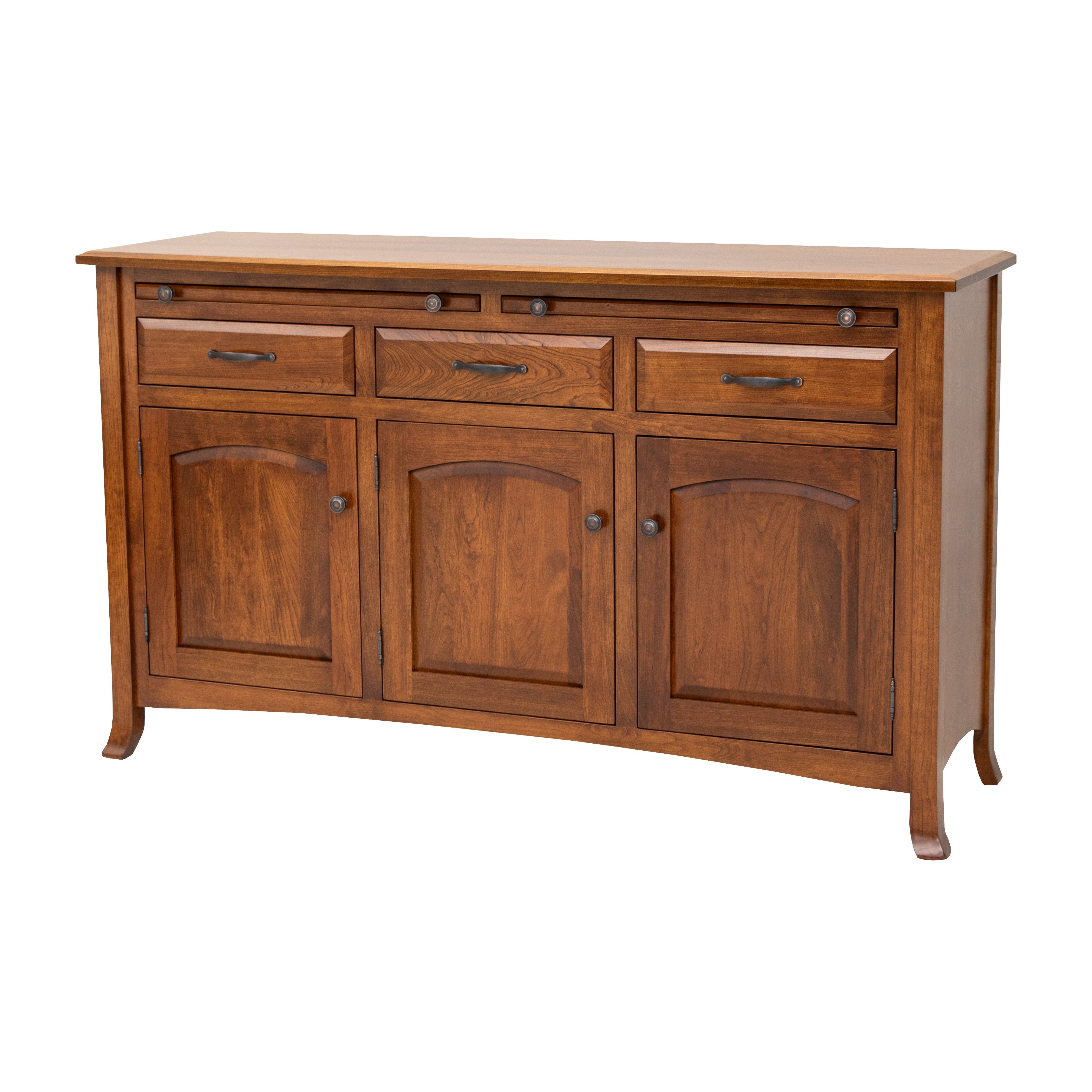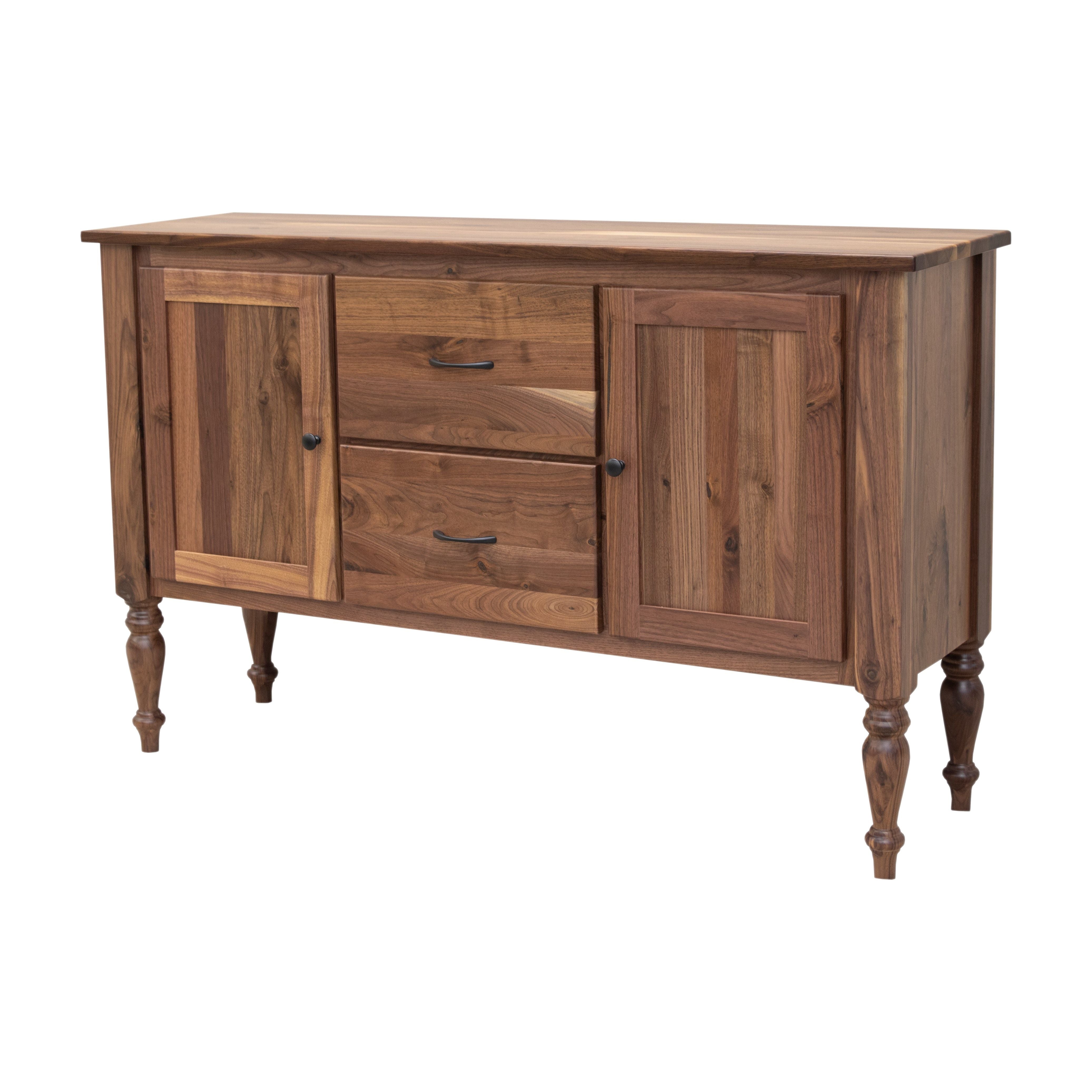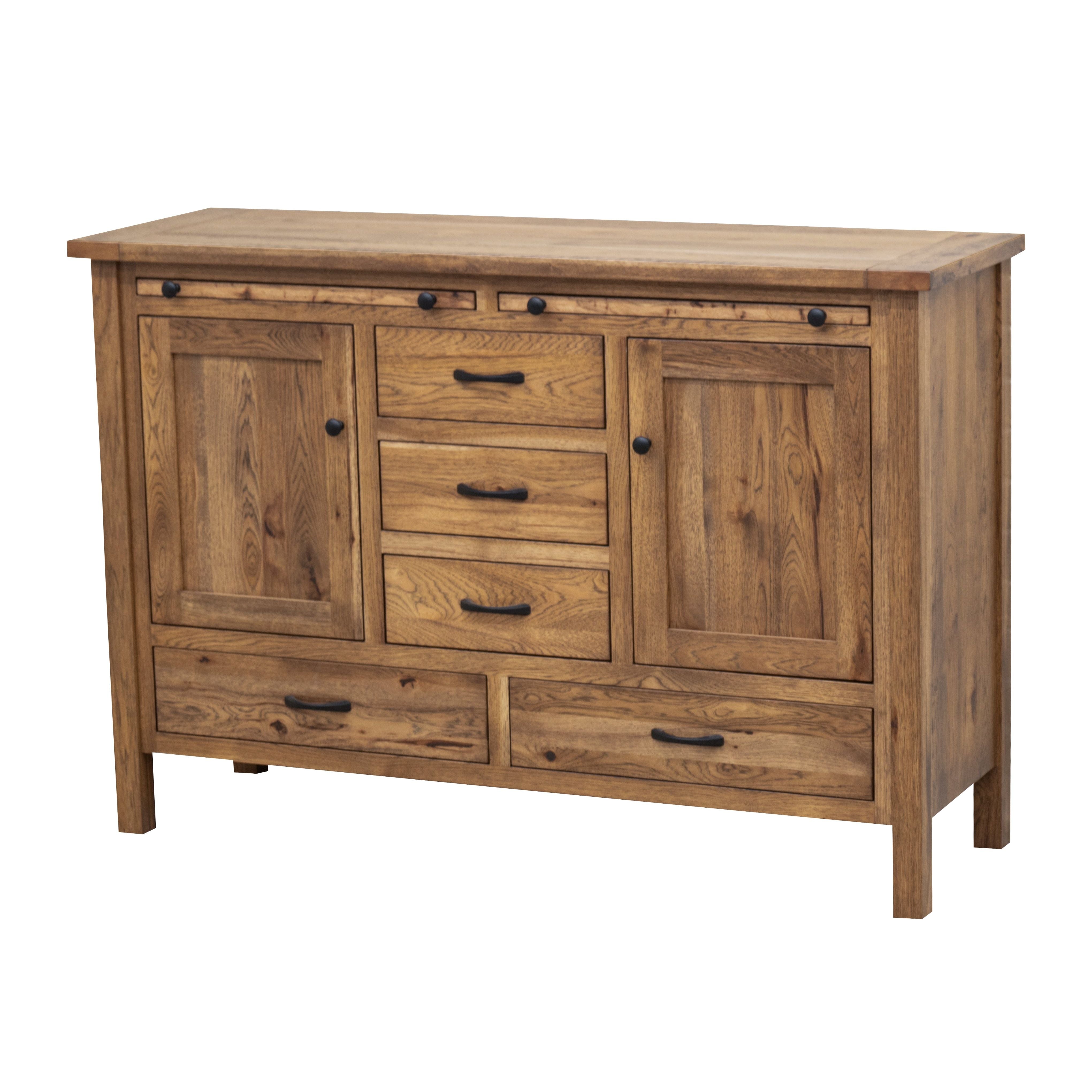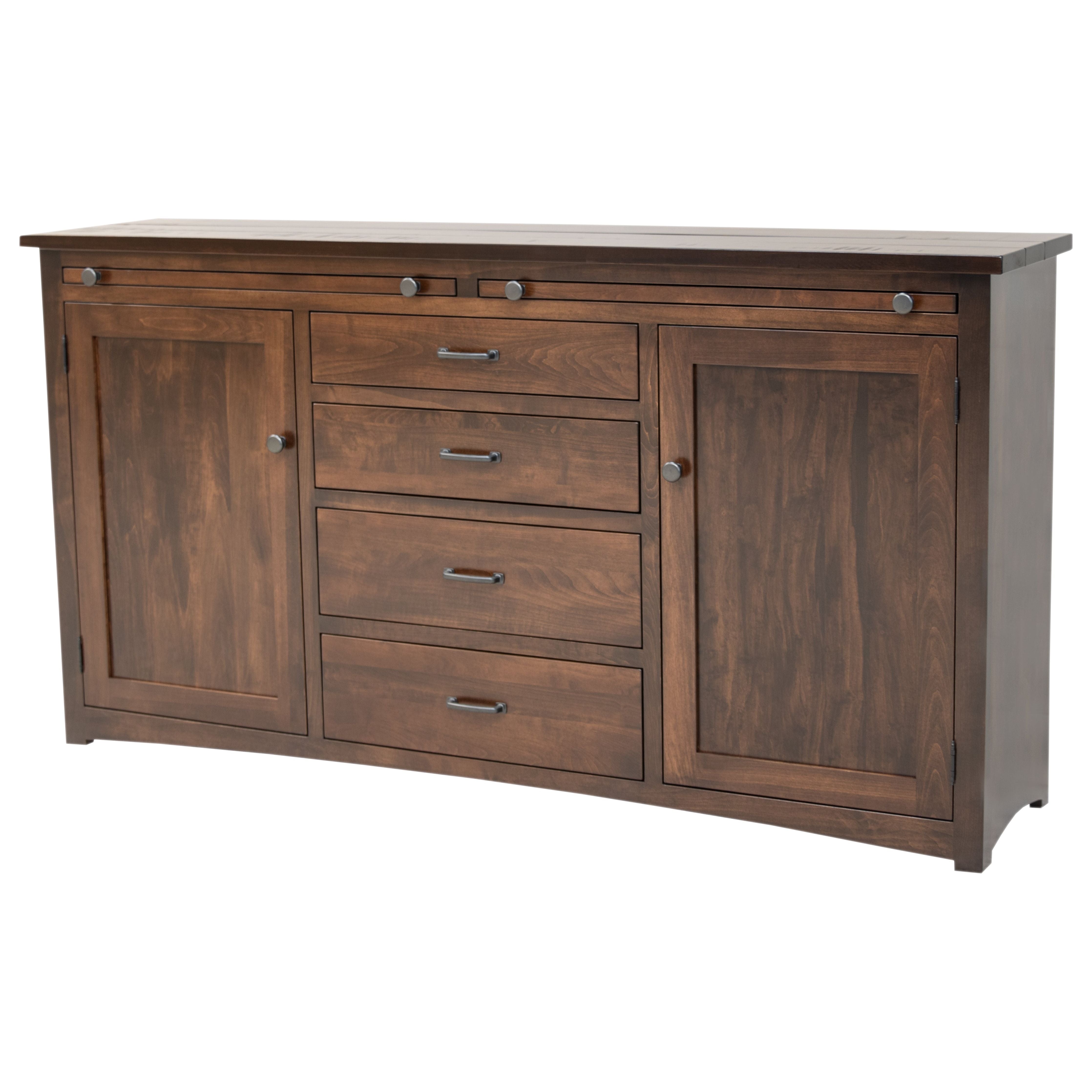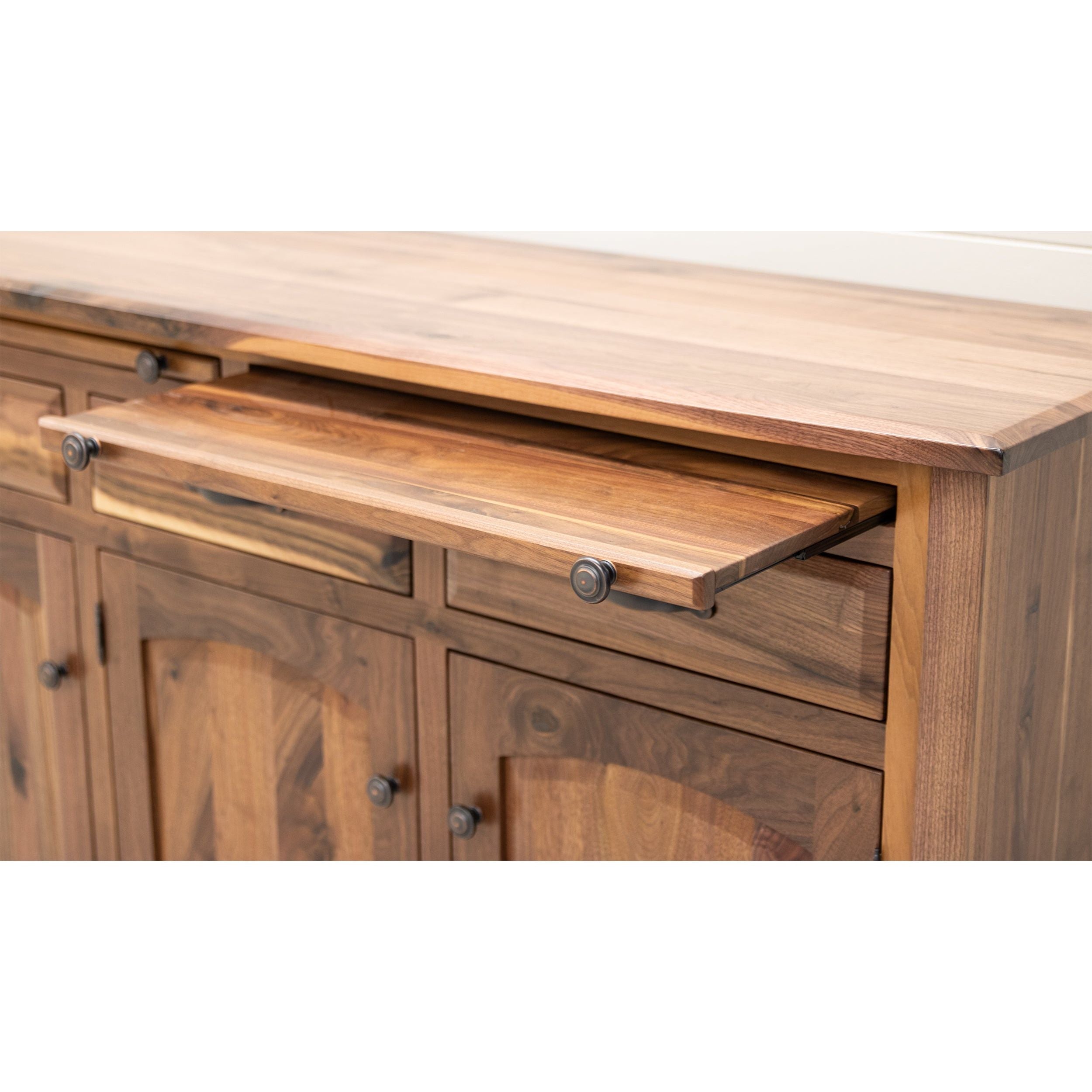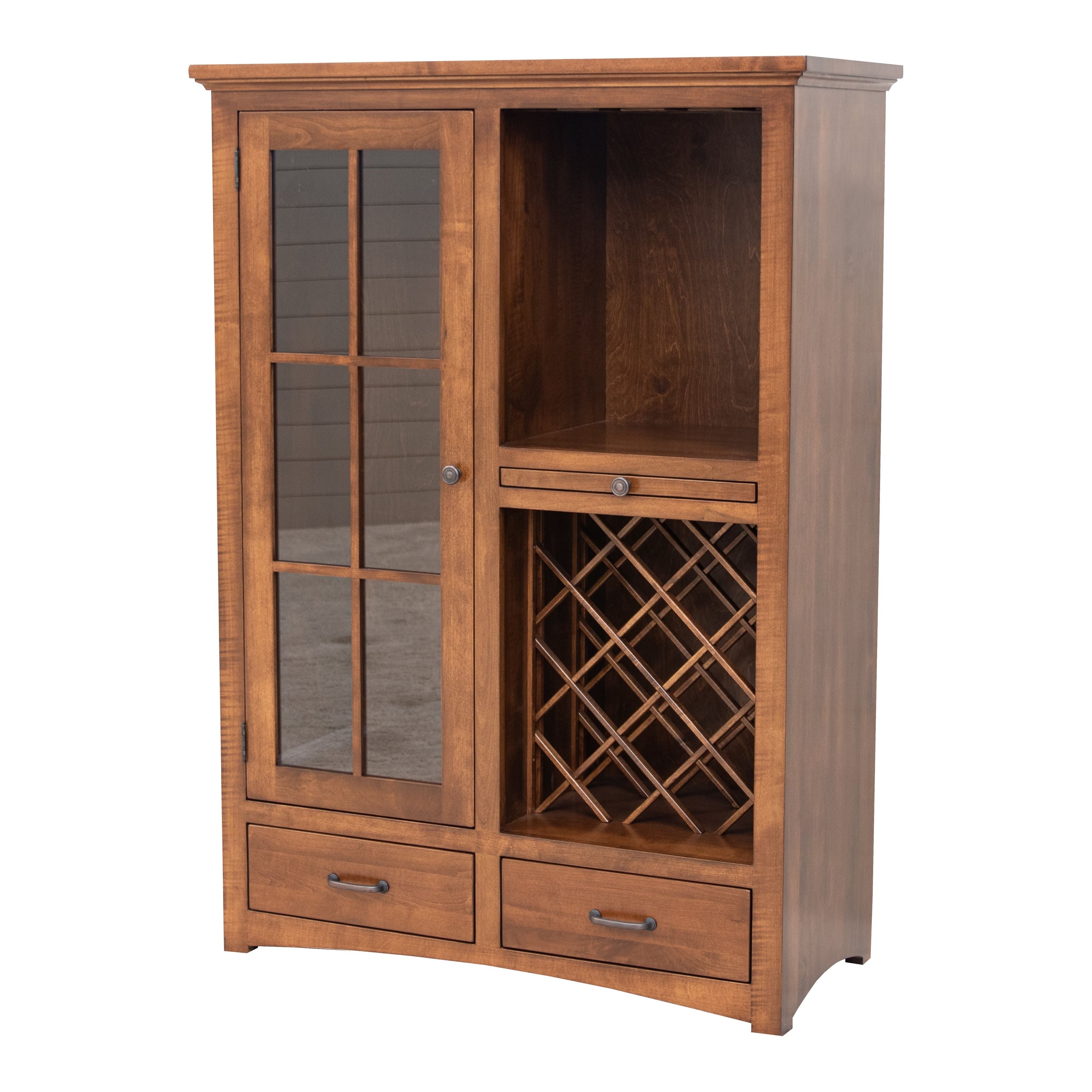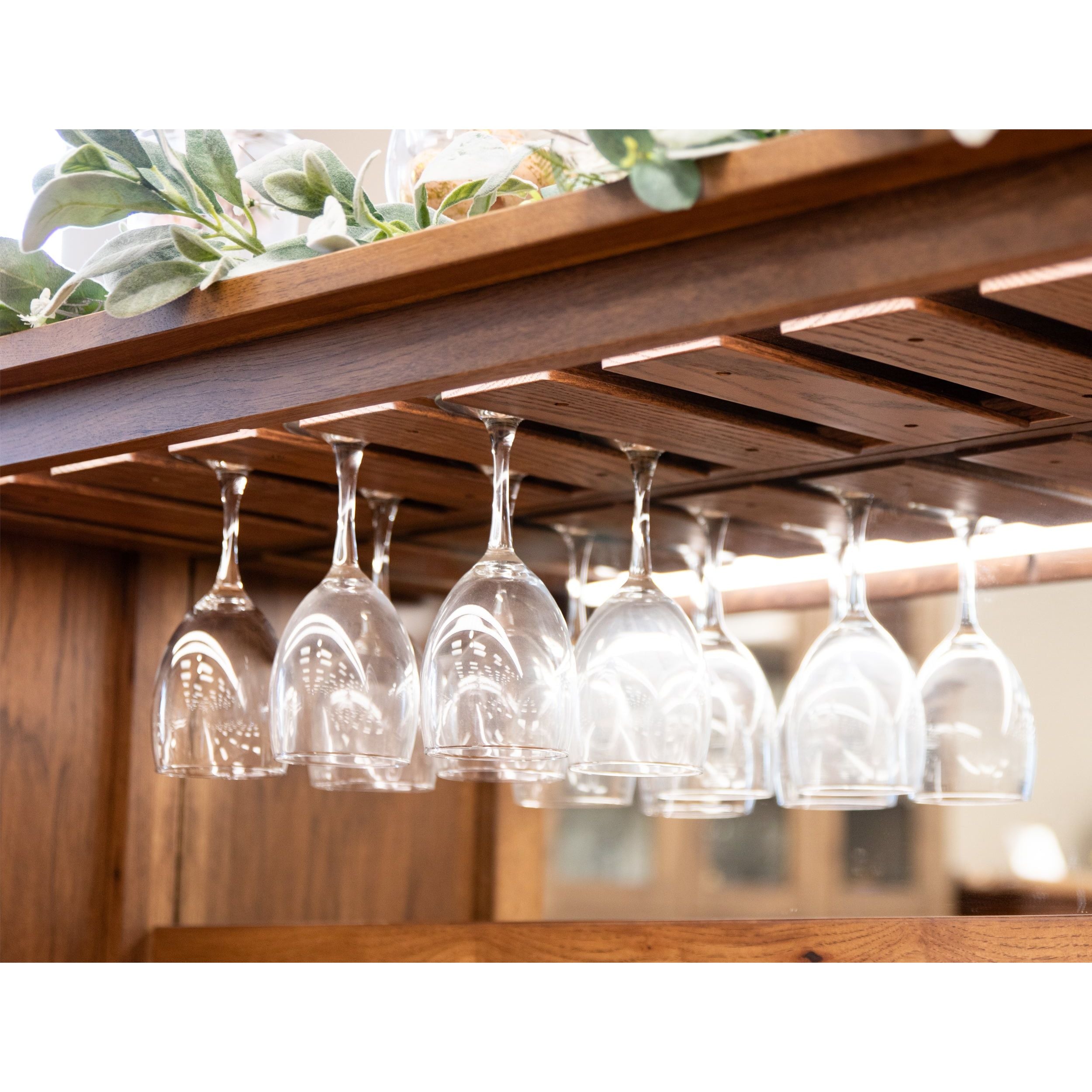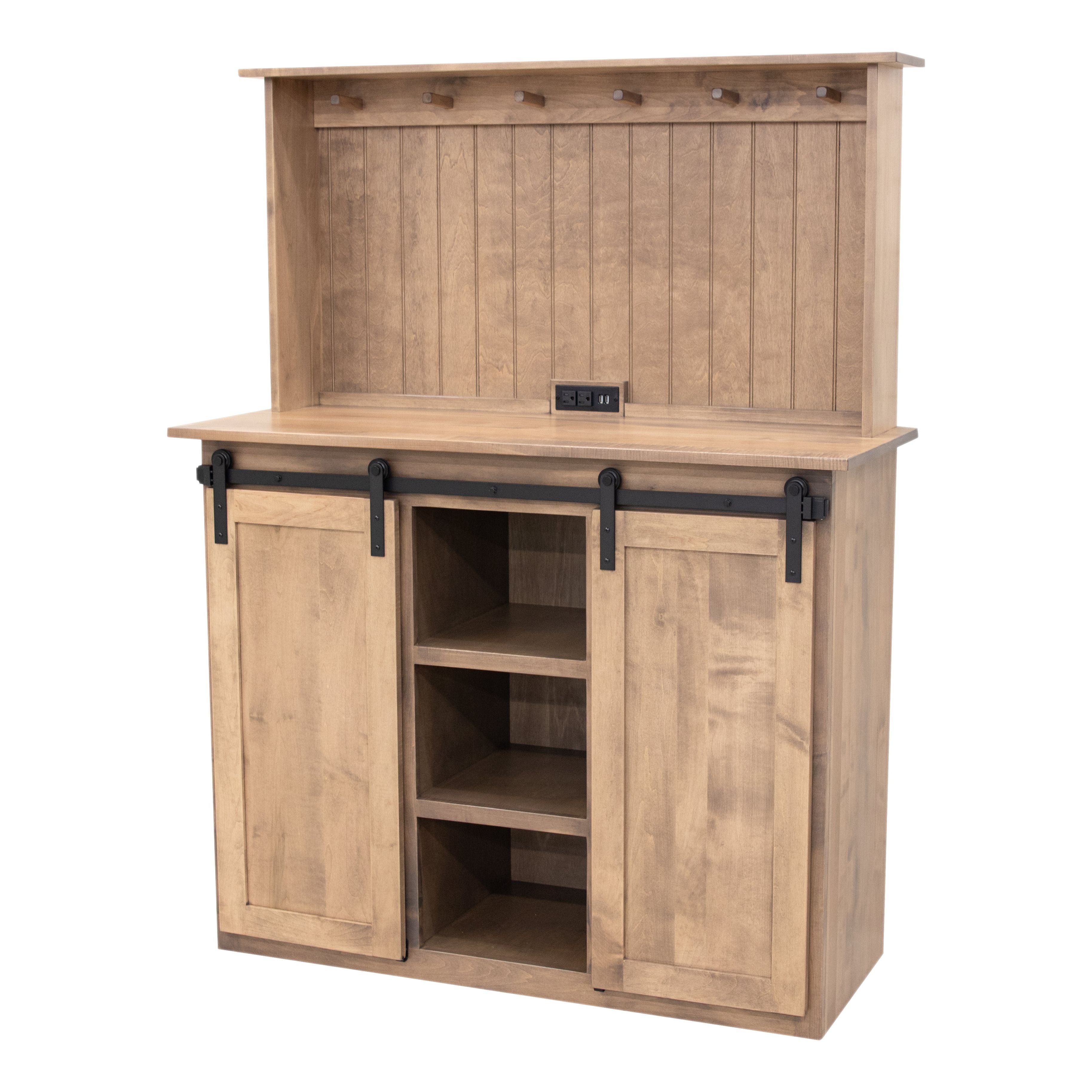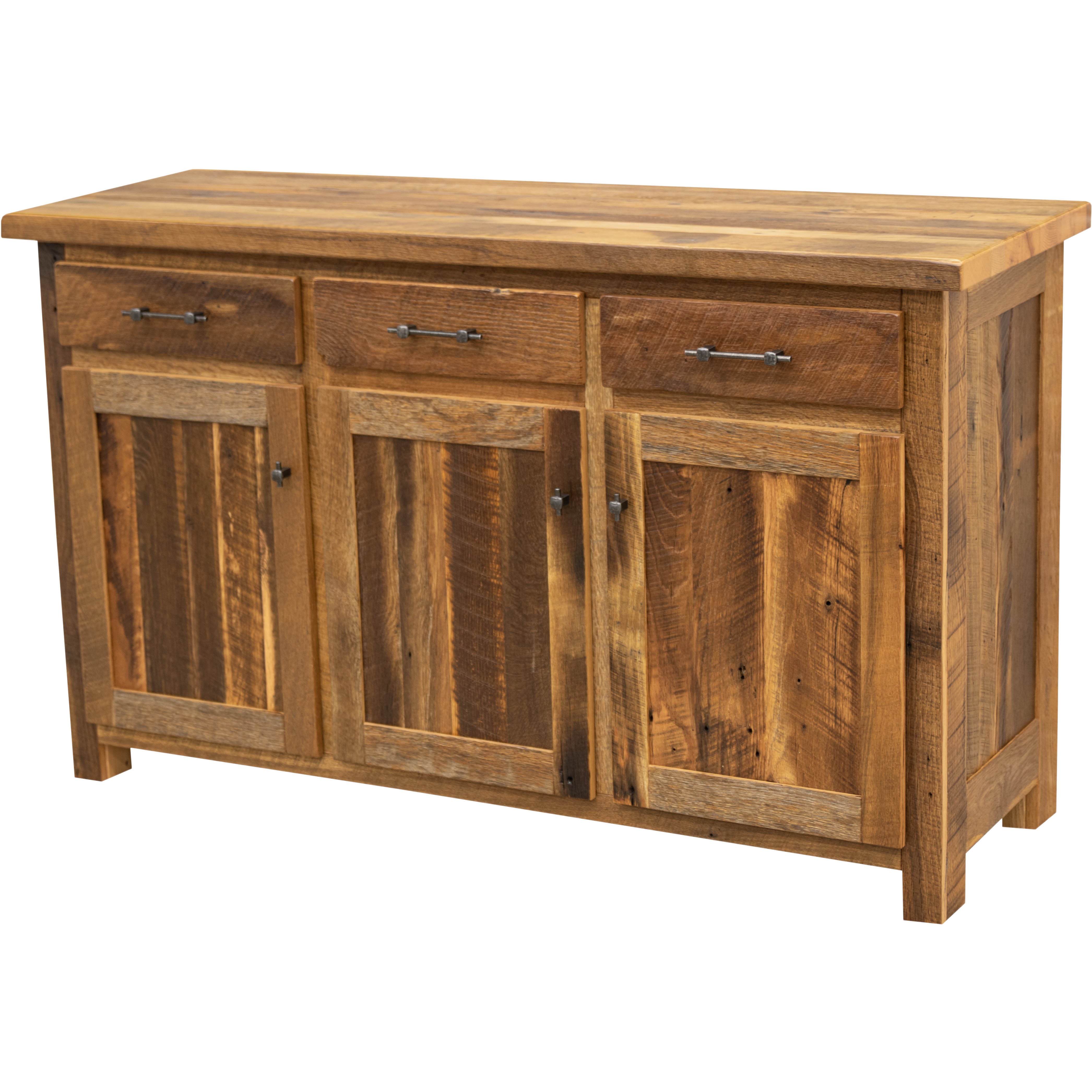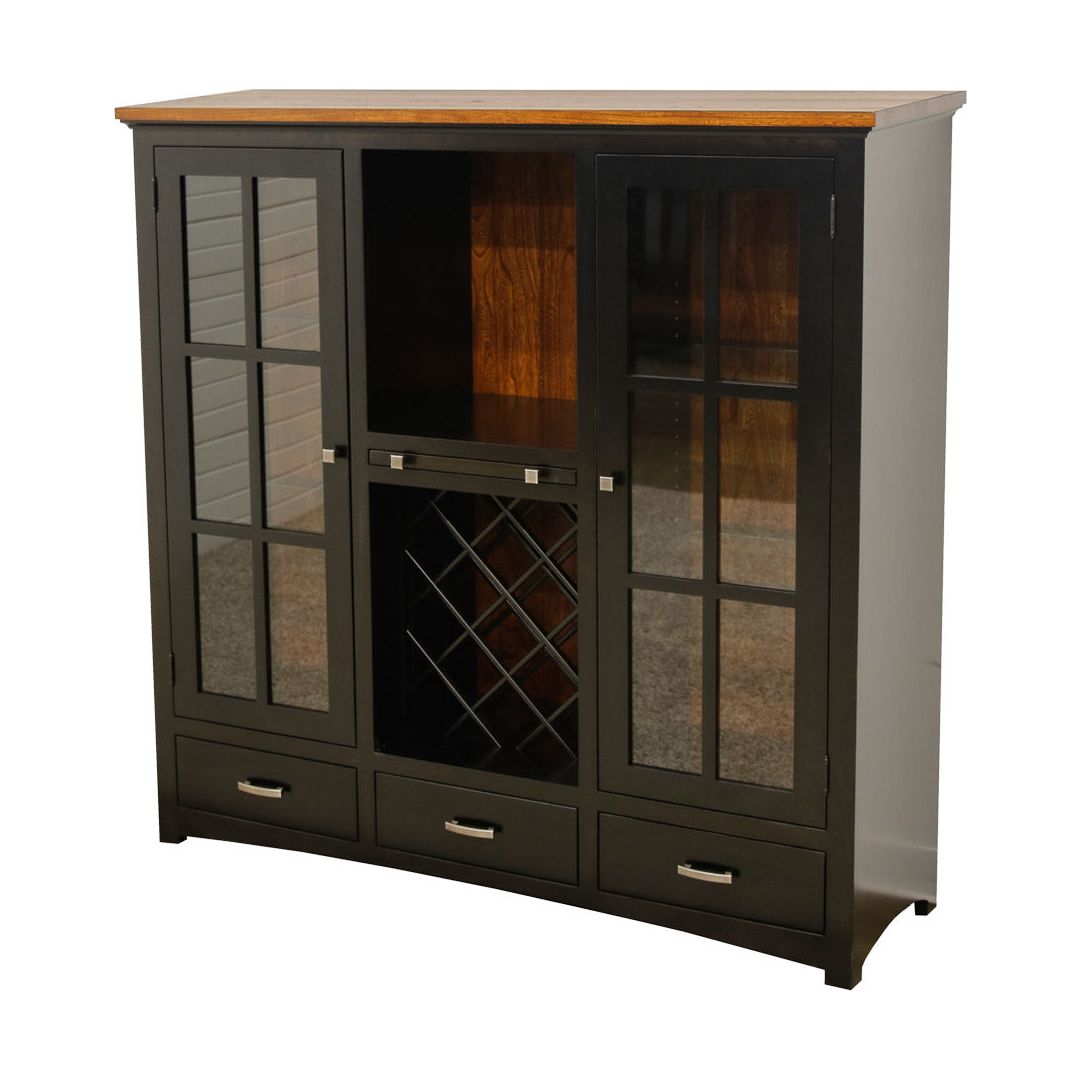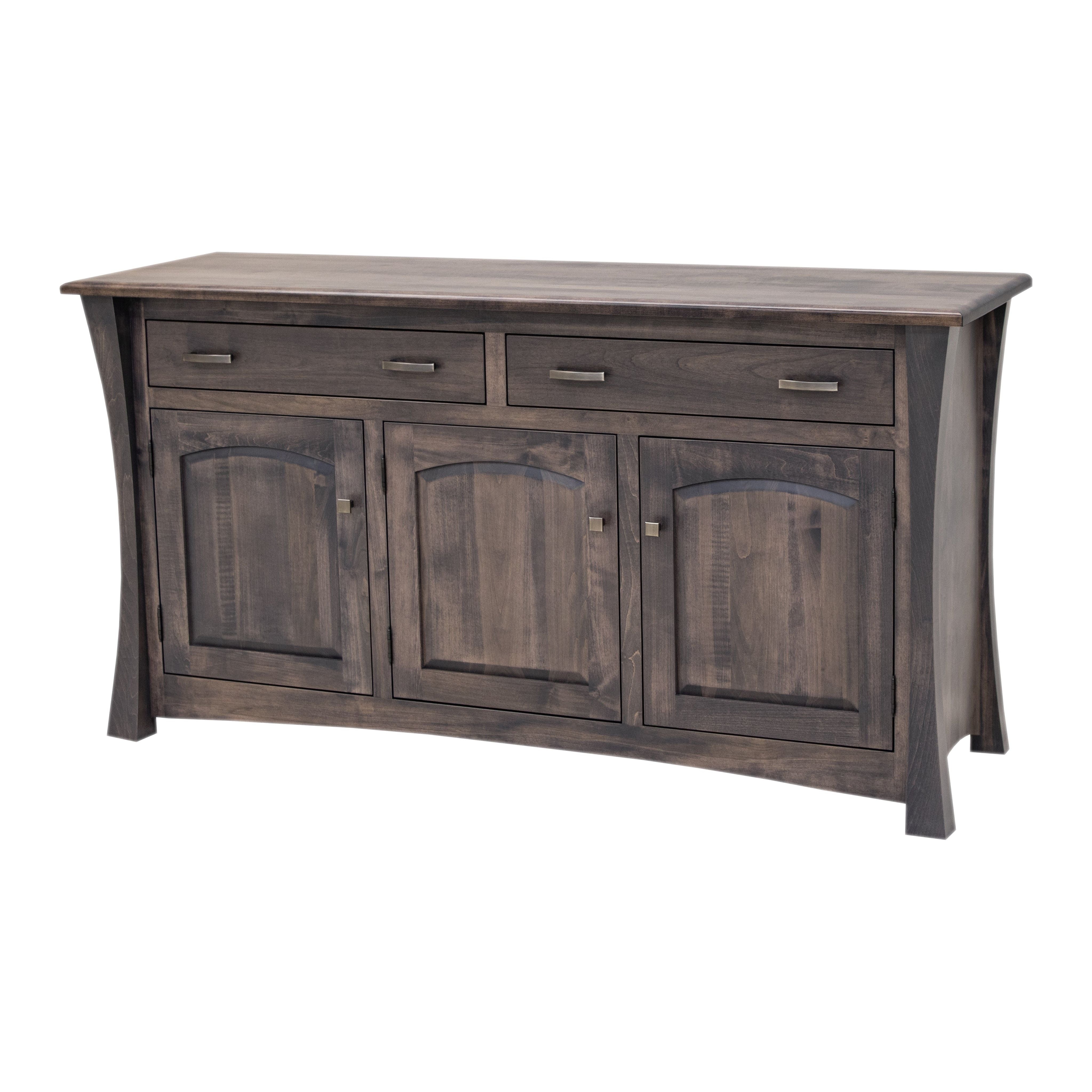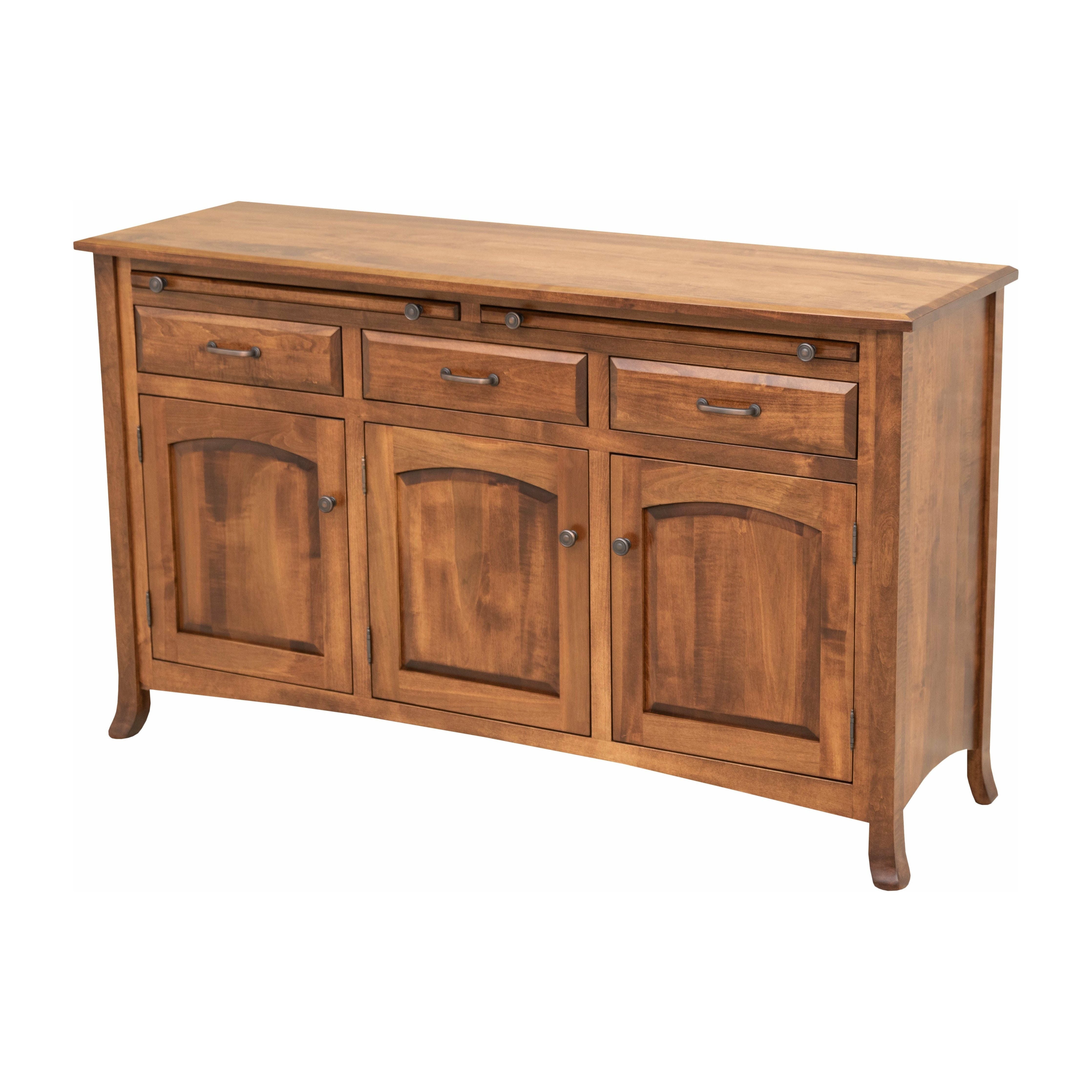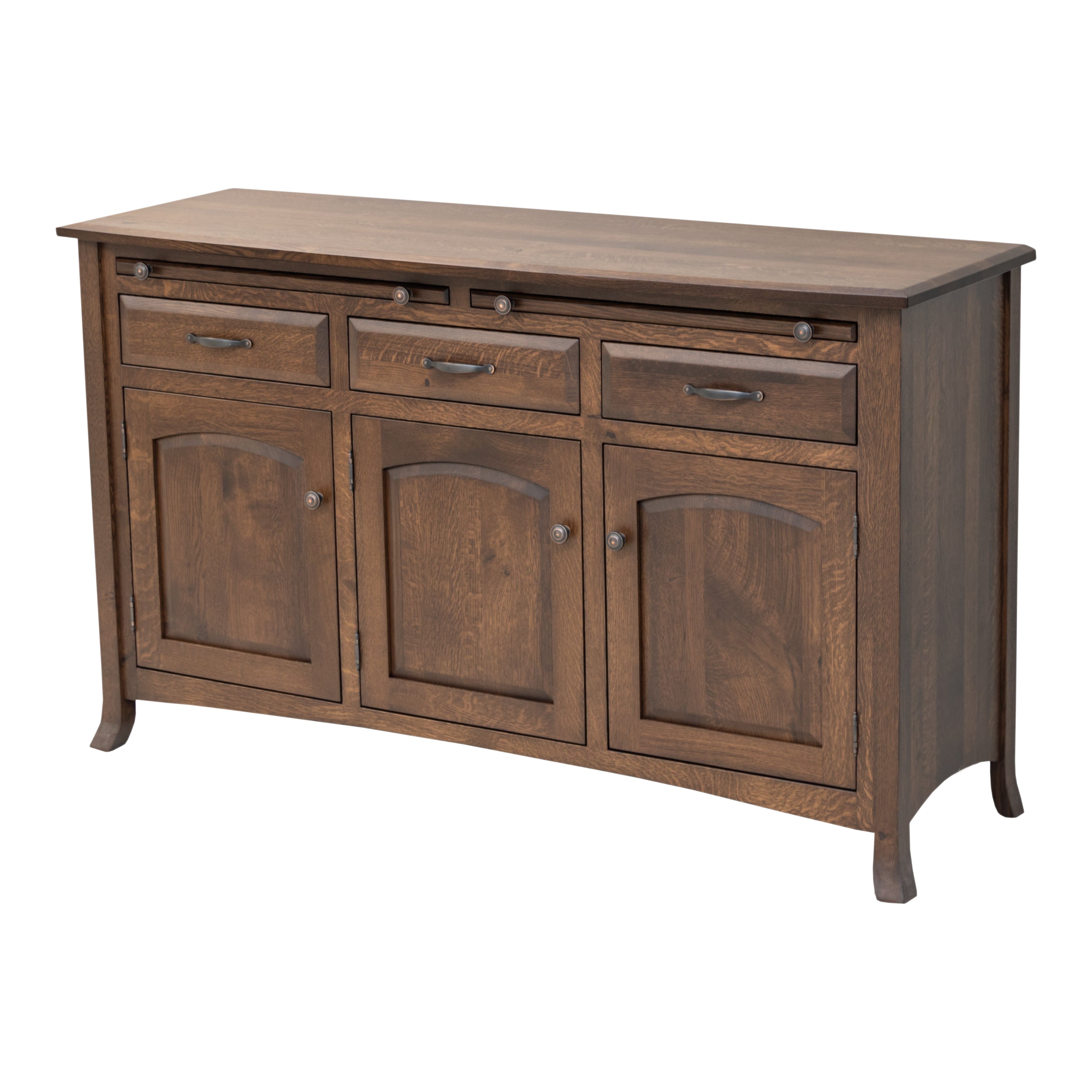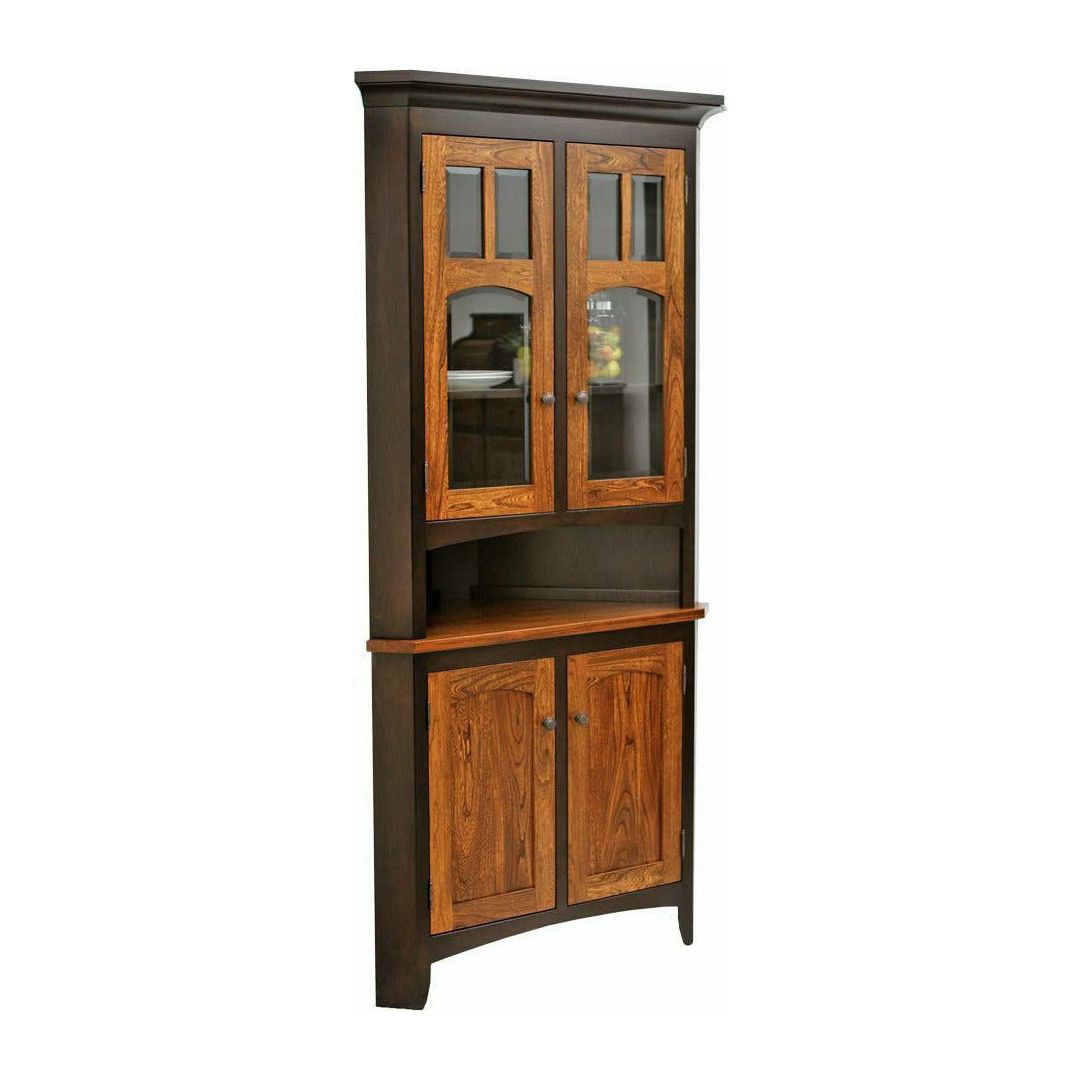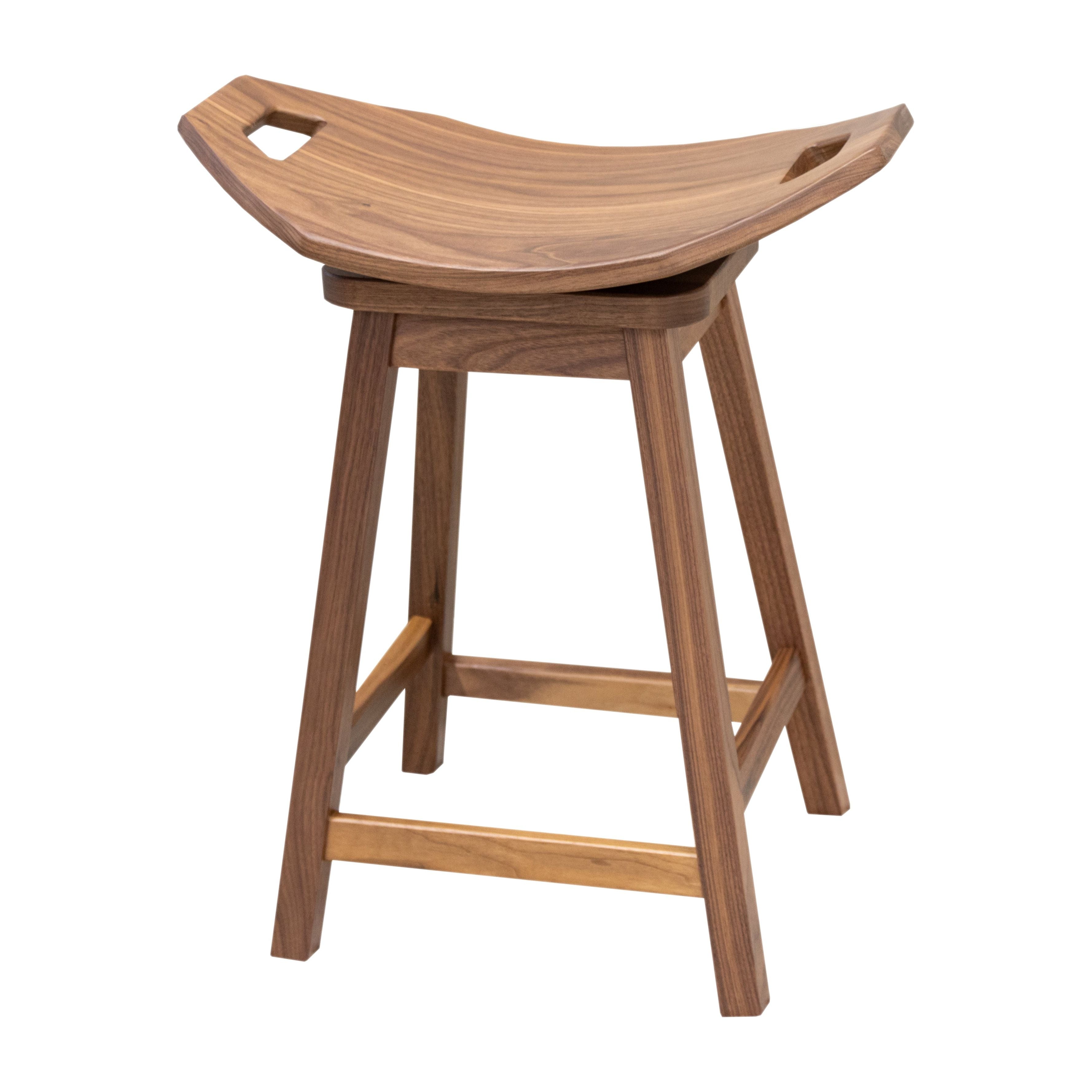Solid Hardwood Sideboard & Buffet Cabinets
Shop Sideboards by Wood Type
All sideboards & buffets are available in any wood, any color.

Custom Sizes Available: Extra Long Sideboard
Customer Favorite Options
Request a larger version of any standard cabinet or completely custom design and make the most of your space. Contact our team for more information.

Standard Tuscany Buffet
The standard Tuscany Buffet is 60" wide, with 2 sets of glass doors.

Custom Size Tuscany Buffet
Make the most of your wall space with a larger 72" version that includes 3 sets of double glass doors.

96" Wide Custom Sideboard
An open floor plan with high ceilings benefits from an extra-long buffet cabinet to ground the space.

Custom Ideas Come to Life
Our detailed 3D renderings ensure that we understand your custom vision for the space.
Add a Mini Fridge (or Two!) to Any Buffet or Sideboard
Keep Drinks Close at Hand

Drink Serving Sideboard
You don't need a large space for serving. This cabinet is only 68" long and packed with storage for drinks.

Custom Walnut Sideboard
This is a large 82" Walnut wood sideboard with a mini beverage cooler on the end.
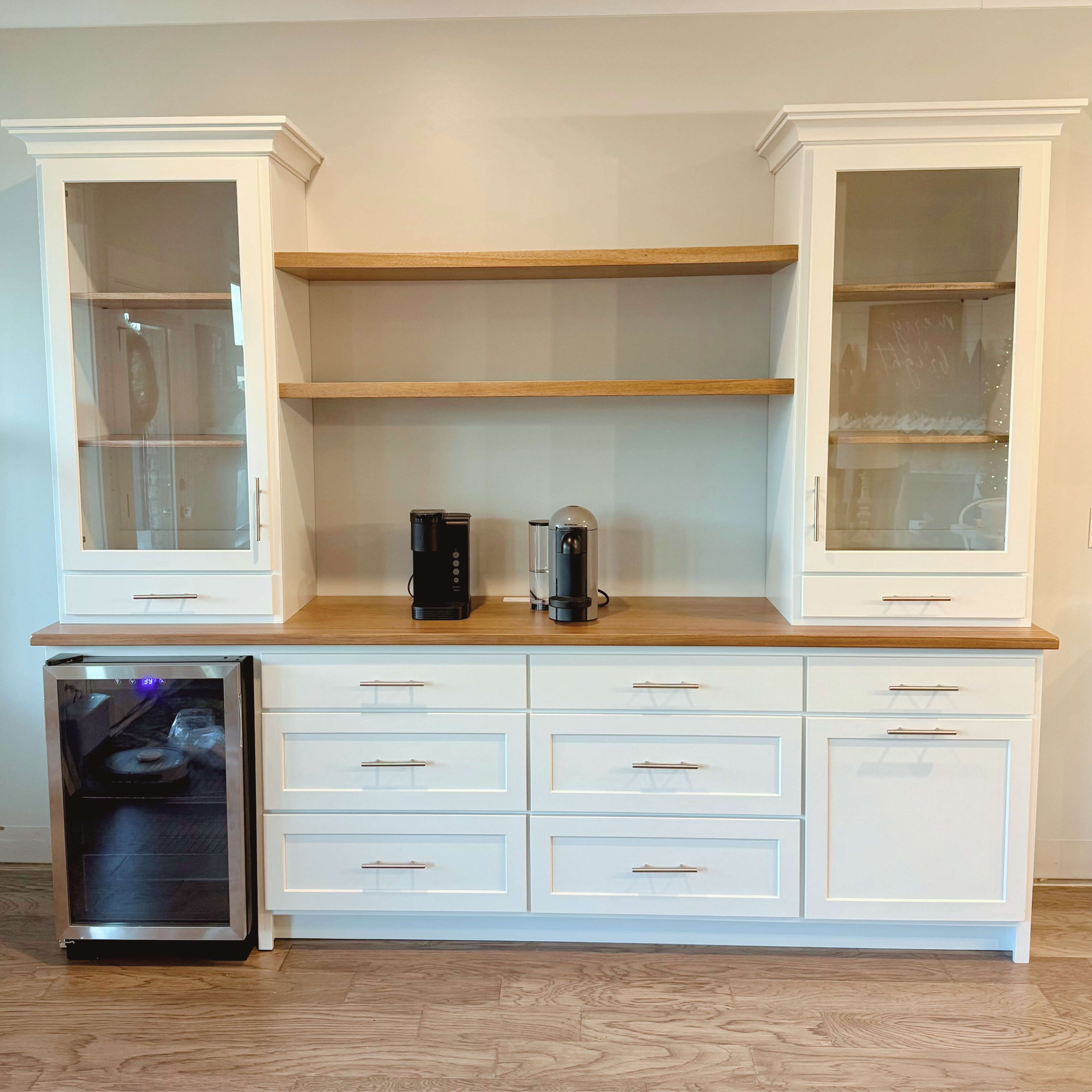
Make it a Focal Point
Adding a hutch top and floating shelves fills up a blank wall, adding storage and style.

Small Space Built-In
Custom dining room cabinets make the most of a small space, shown with a matching wall cabinet above.

Large Built-In Coffee Bar Cabinet
Detailed mouldings and trim work elevate your dining room built-in cabinetry, shown with added lighting.

Setup Your Dream Home Bar
Our custom sideboards allow you to create the perfect home bar for your basement or family room.

Custom Wine Cabinet
A wall-to-wall, built-in wine hutch keeps your collection and accessories close at hand and on display.

Large Bar Cabinet
Fill up a wall with a large bar cabinet that includes a pair of mini refrigerators, a trash pullout and more.
Small Sideboard & Buffet Cabinet Options
Small Space Solutions

Small Walnut Coffee Bar
Add functionality and style in a small footprint like this custom Walnut sideboard.

Custom Size & Layout
All styles allow requests for custom sizes and storage layouts to make the most of your space.

Perfect for Small Spaces
The Newport Coffee Bar with Open Shelves is modern favorite for small spaces.
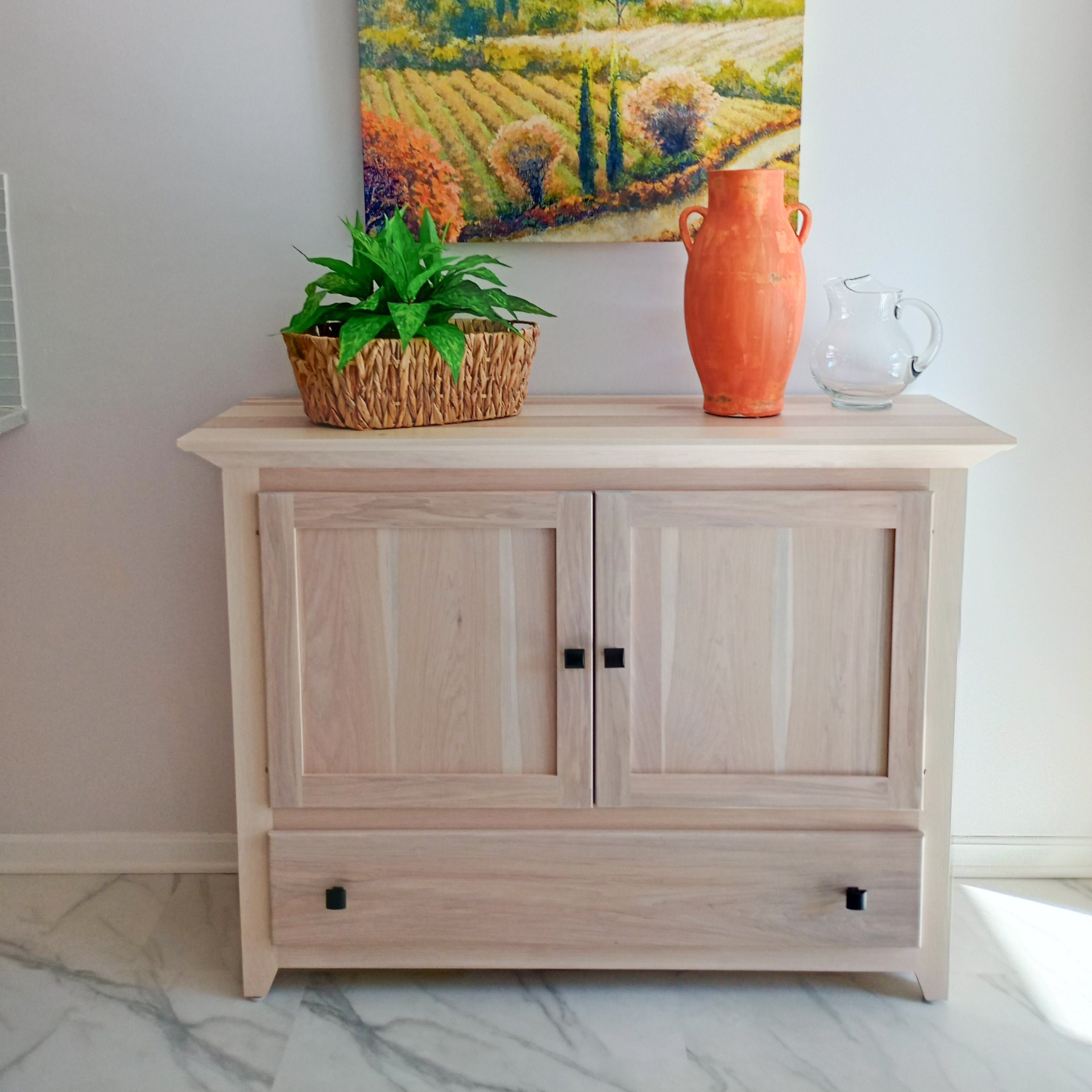
Small Modern Wood Sideboard
A Half Mission Grid Cabinet gets a modern style refresh as an affordable small sideboard.
More Custom Sideboard Ideas...




Solid Wood Sideboard & Dining Room Buffet Cabinets
Complete your kitchen or dining area with the addition of a wooden sideboard to provide stylish storage. Our collection of wood buffet cabinets is completely customizable to match your dining room furniture. Select the matching wood and color, as well as style details like a beveled edge along the buffet top that matches the table.
Sideboards and Buffets Size Options
Buffet cabinet styles come in varying standard sizes for your convenience. Small 2-door options range from 36"-48" wide depending on the style of the cabinets. Larger buffets typically have 3 or 4 doors, or a stack of drawers in the center. These larger buffets are commonly at least 60"-72" wide, offering ample storage and serving space.
Perhaps the most common custom option is the ability to order any sideboard or buffet in a custom size. For small dining rooms where every inch counts, having the buffet slimmed down to 16"-18" deep instead of 22" gains valuable floor space. This helps maneuverability around the dining table as well.
You can configure the storage space within our buffet cabinets for your specific needs. Add a wine rack into the base or extra drawers for storing seasonal linens. Request storage solutions such a silverware divider insert inside buffet drawers. Pullout trays add extra serving space if you often setup dessert or beverages along the buffet table top.
A common custom request is the addition of a top hutch cabinet. Traditional enclosed, glass display top cabinets offer storage to showcase treasured family heirlooms. Modern, open shelving hutch tops create a place to display seasonal decor or collectibles. These top options are available on any buffet base cabinet.
Shop for a Custom Buffet Cabinet Sideboard
Aside from variations of our standard buffets, we also build completely one of a kind, custom wood buffets. Submit a picture or simple sketch of your vision along with the dimensions and type of wood you are looking for. Our artisans use local hardwoods. Some designs are not possible because of the characteristics of solid wood.
Our team is happy to assemble a free quote of the custom buffet along with a detailed 3D blueprint upon request. The visual aid eliminates the stress of custom ordering. See at a glance how the sideboard will fit into your room.
Open floor layouts of spacious new homes often need a large buffet to fit proportionately on an open wall. Having your buffet made a few inches taller helps ground the space as well. Taller buffets also become more visible when setting behind a large dining table. A room with high ceilings is great for displaying a tall buffet with a mirror or piece of art above it.
Aside from the kitchen and dining room, solid wood sideboards are versatile in other rooms as well. Some styles are perfect as TV stands in the family or living room, with or without added wine storage. A 2-door buffet may fit perfectly in a small entryway, creating a beautiful drop zone inside the front door.
Choosing the Best Wood for a Sideboard Cabinet
How do you know which wood type is best for your solid wood buffet? All the hardwoods used by our Amish craftsmen are durable, long-lasting and sturdy. Much of it comes down to personal preference. Here is a quick guide to common Ohio hardwoods used in solid wood buffets.
Maple wood has a smooth, subtle grain texture with simple elegance. The light color of Maple wood makes it a natural choice for those wanting a buffet with a light brown or grayish wood tone. These stain colors beautifully complement the neutral color scheme of farmhouse interior design styles.
Maple is easy to find and paints nicely, so we often use it for black or white painted buffets. Opt for a smooth white painted buffet base with a coordinating wood stained top. Popular top stain colors on Maple wood include Cocoa Light, Sandy Point, and DC Driftwood.
Cherry wood has a similar hardness and grain texture as Maple. The main difference between the two is the undertone in the wood. Natural or light stains on Cherry wood will have a warm, reddish undertone that darkens with age.
Medium stain colors are most popular on Cherry wood, such as Michael's Cherry and Asbury Brown. People typically use cherry wood buffets in traditional, more formal dining areas.
Red and White Oak, along with Hickory wood have a prominent grain texture. Durability wise, these tend to rank highest on the Janka hardness scale. Hickory tops the chart at 1820, the hardest wood type we use.
Lighter stains on Oak or Hickory tend to lend an informal, slightly rustic appeal to your home. Dark stains will even out the grain texture and lean more traditionally formal.
White oak wood with a light stain color is especially beautiful in mid-century modern dining room styles. Mid-century modern interior design styles lean toward minimalism, no extra details or trim work. The simple designs highlight the grain texture of White Oak wood.
Walnut is a beautiful wood option for a modern dining room sideboard. The natural grayish brown tone of the wood makes it perfect with a clear finish and no stain applied at all. Light gray or tan stains will smooth the color variations, while still showcasing the grain texture of the wood. Live edge buffet tops of solid walnut add a stunning wood accent to your space.
Elm wood is a local hardwood used often by Amish craftsmen in Ohio. The feathery grain texture in Elm appears almost exotic looking. In dining room buffets, we use Elm wood most often as part of a 2-tone cabinet. The top of the buffet may be Elm wood with the base crafted using Maple wood and a black Ebony stain.
Finally, another hardwood option is choosing reclaimed barnwood. Sustainably sourced reclaimed wood buffets are available in multiple sizes and styles.
Explore our gallery of solid wood sideboards and dining room buffet cabinets for inspiration. Whether you are building a new home or simply adding storage to an existing space, there is something for everyone. Contact our team at Dutch Craft Furniture with any questions you may have or for pricing on a custom variation. Start today on creating a dining room that your loved ones will enjoy gathering in for many years to come.




















